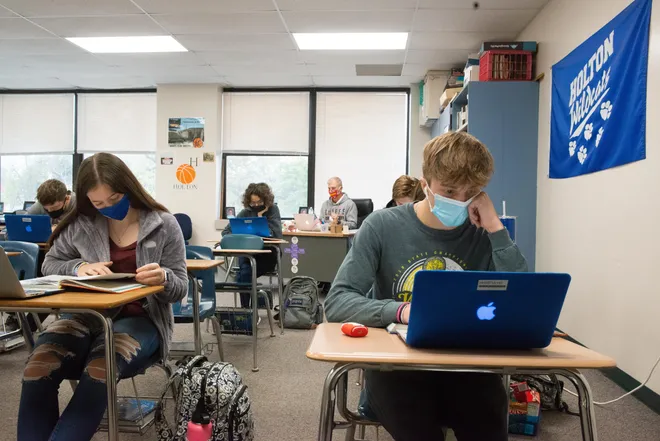
The world at your fingertips. Answers to a billion different questions and conversations with any corner of the world; all accessible through cell phones. To teenagers, a cell phone is a lifeline and a distraction. They are not able yet to find the balance between work (school) and play (cell phone usage). With a generation that is so reliant on cell phones, the recent introduction of AI was welcomed with open arms. Their trouble regulating cell phone usage would make it likely that the same issue would occur with Artificial Intelligence, but with proper instruction AI use in the classroom will not become an issue.
AI in Schools
In New York Times Article: “How Schools Can Survive (and Maybe Even Thrive) With A.I. This Fall,” tech columnist, Kevin Roose, aims to calm the fears that teachers have regarding AI in education. Roose states that “Last year, many schools tried to scare students away from using A.I. by telling them that tools like ChatGPT are unreliable, prone to spitting out nonsensical answers and generic-sounding prose.” He goes on to say that this approach falls through because students like to rebel.
Instead, Roose suggests a different approach: to allow students to use this new technology but aid them in discovering how it can be a tool to enhance their learning. AI doesn’t have to write essays for the student, but with the student.
Artificial Intelligence has already been used as a helpful tool outside the classroom so it only makes sense to implement the helping part into the classroom. An example of this is shown in “Generative AI Hits Education, Ushering in a Sea Change for Schools” by Aaron Gifford; a disabled patient is able to write and send an email with the help of AI. Incredible things can be done with AI if people understand how to use it.
Works Cited
Gifford, Aaron. “Generative AI Hits Education, Ushering in a Sea Change for Schools.” EBSCOhost, 24 June 2019, http://research.ebsco.com/linkprocessor/plink?id=eeb009de-e504-3f02-aced-8b01d9e7cd64. Accessed 19 December 2023.
Roose, Kevin. “How Schools Can Survive A.I.” The New York Times, 24 August 2023, https://www.nytimes.com/2023/08/24/technology/how-schools-can-survive-and-maybe-even-thrive-with-ai-this-fall.html?searchResultPosition=10. Accessed 19 December 2023.
